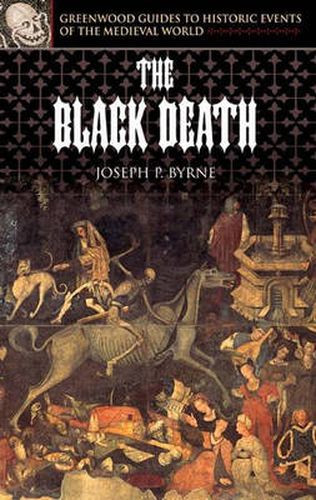Readings Newsletter
Become a Readings Member to make your shopping experience even easier.
Sign in or sign up for free!
You’re not far away from qualifying for FREE standard shipping within Australia
You’ve qualified for FREE standard shipping within Australia
The cart is loading…






Probably the greatest natural disaster ever to strike humanity, the Black Death’s lethality is legendary, killing between a quarter and a half of the population of the affected areas. Though historians suspect a first wave of bubonic plague struck the Mediterranean area c. 571-760 C.E., there is no doubt that the plague was carried west by the Mongol Golden Horde in the late 1340s as they raided as far west as Constantinople, where it is believed that Genoese traders became infected with the disease, which they then carried into European and northern African ports. Within about two years practically the entire European continent and much of North Africa had been affected by this disaster of apocalyptic proportions. Eight thematic chapters guide the reader through the medical perspective of the plague - medieval and modern - and the plague’s impact on society, cities, individuals, and art of the time. An annotated timeline guides the reader through the key events and dates of this recurring disaster. Illustrations show how artists represented the plague’s impact on the self and society. Twelve primary documents, half of them never before translated into English, come from eyewitnesses ranging from Constantinople, Damascus, Prague, Italy, France, Germany, and England. A glossary is provided that enables readers to quickly look up unfamiliar medical and historical terms and concepts such as Bacillus, Verjuice, and Peasants’ Revolt of 1381. An annotated bibliography follows, divided by topic.
$9.00 standard shipping within Australia
FREE standard shipping within Australia for orders over $100.00
Express & International shipping calculated at checkout
Probably the greatest natural disaster ever to strike humanity, the Black Death’s lethality is legendary, killing between a quarter and a half of the population of the affected areas. Though historians suspect a first wave of bubonic plague struck the Mediterranean area c. 571-760 C.E., there is no doubt that the plague was carried west by the Mongol Golden Horde in the late 1340s as they raided as far west as Constantinople, where it is believed that Genoese traders became infected with the disease, which they then carried into European and northern African ports. Within about two years practically the entire European continent and much of North Africa had been affected by this disaster of apocalyptic proportions. Eight thematic chapters guide the reader through the medical perspective of the plague - medieval and modern - and the plague’s impact on society, cities, individuals, and art of the time. An annotated timeline guides the reader through the key events and dates of this recurring disaster. Illustrations show how artists represented the plague’s impact on the self and society. Twelve primary documents, half of them never before translated into English, come from eyewitnesses ranging from Constantinople, Damascus, Prague, Italy, France, Germany, and England. A glossary is provided that enables readers to quickly look up unfamiliar medical and historical terms and concepts such as Bacillus, Verjuice, and Peasants’ Revolt of 1381. An annotated bibliography follows, divided by topic.